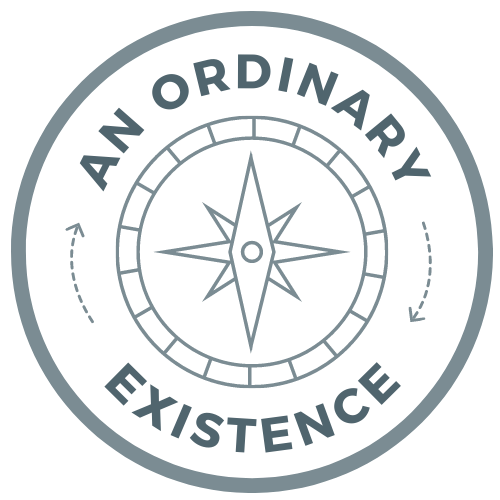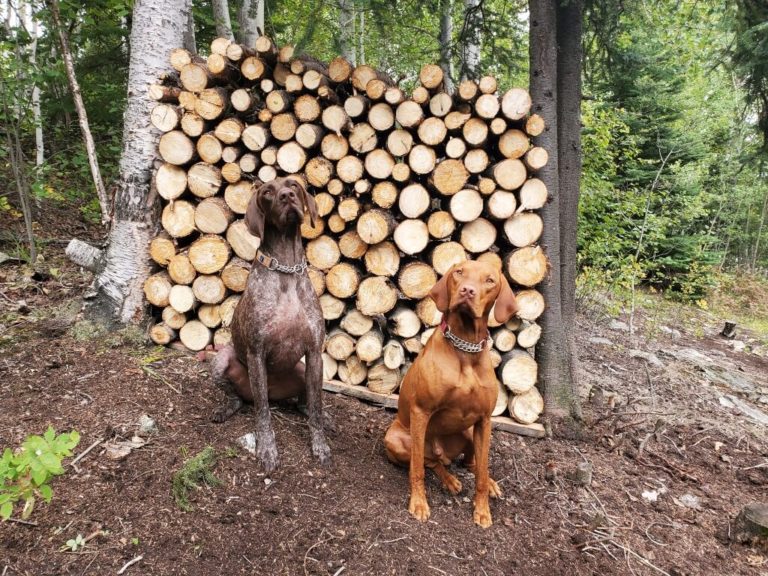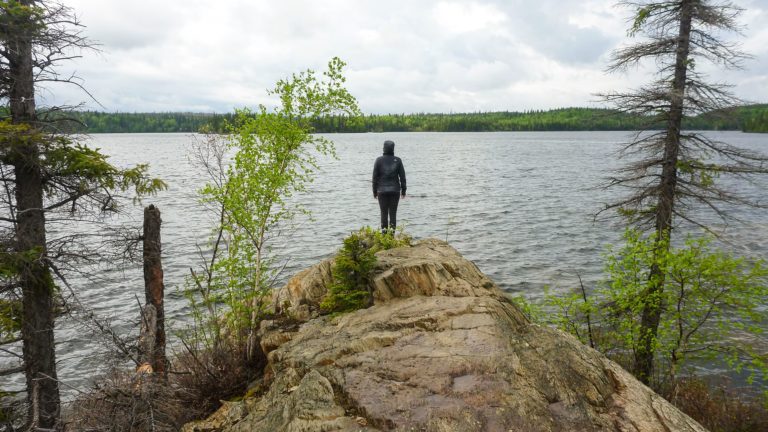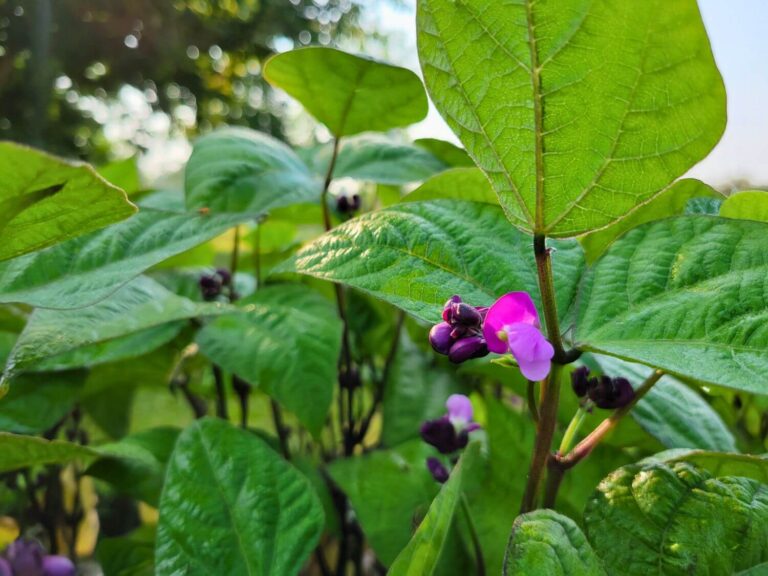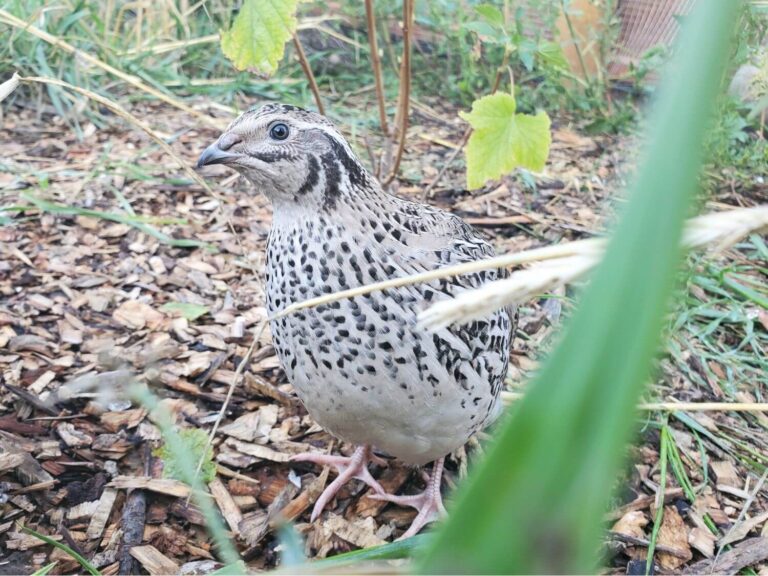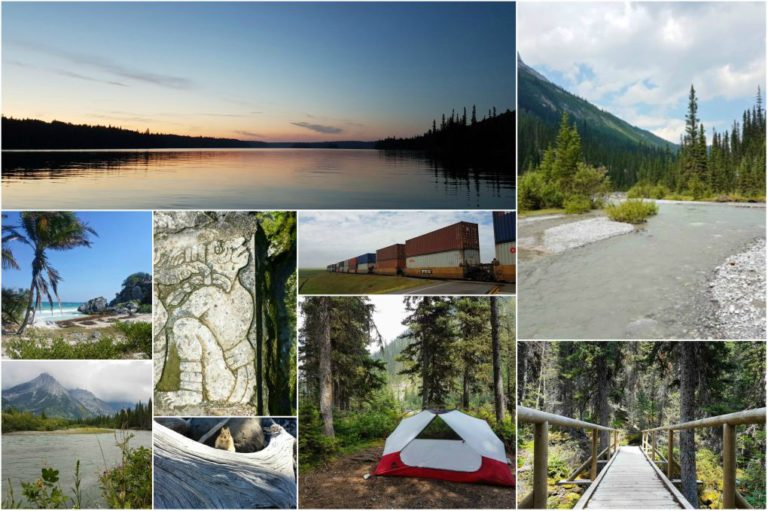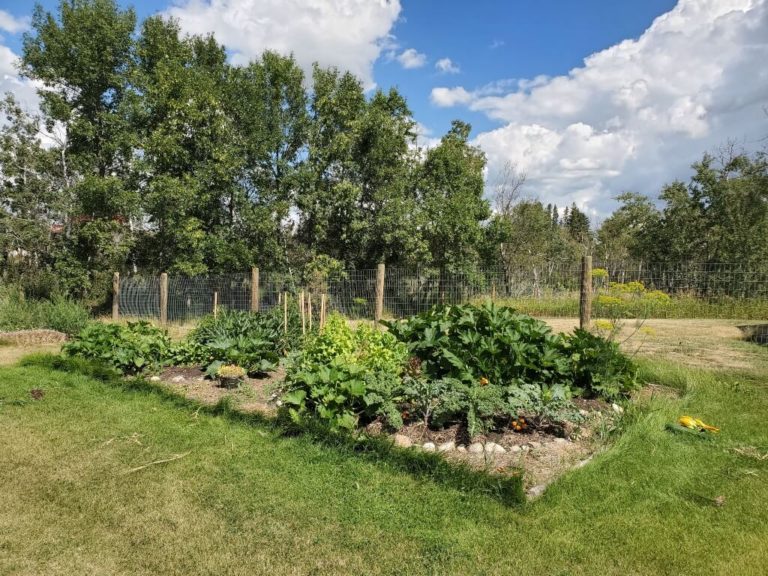MY ANNUAL READING LIST: 2020
This post may include affiliate links. As an Amazon Associate I earn from qualifying purchases. Find more info in my privacy policy.
I had a plan to read 20 books in 2020. One would think that a global pandemic would allow the time to reach such a goal, yet I still managed to fall short. I did, however, get through 16 titles over the past 12 months, and I thought I’d share a recap of the books that kept me busy in 2020.
I’ve broken the list into various categories to help keep it organized and easy to navigate.
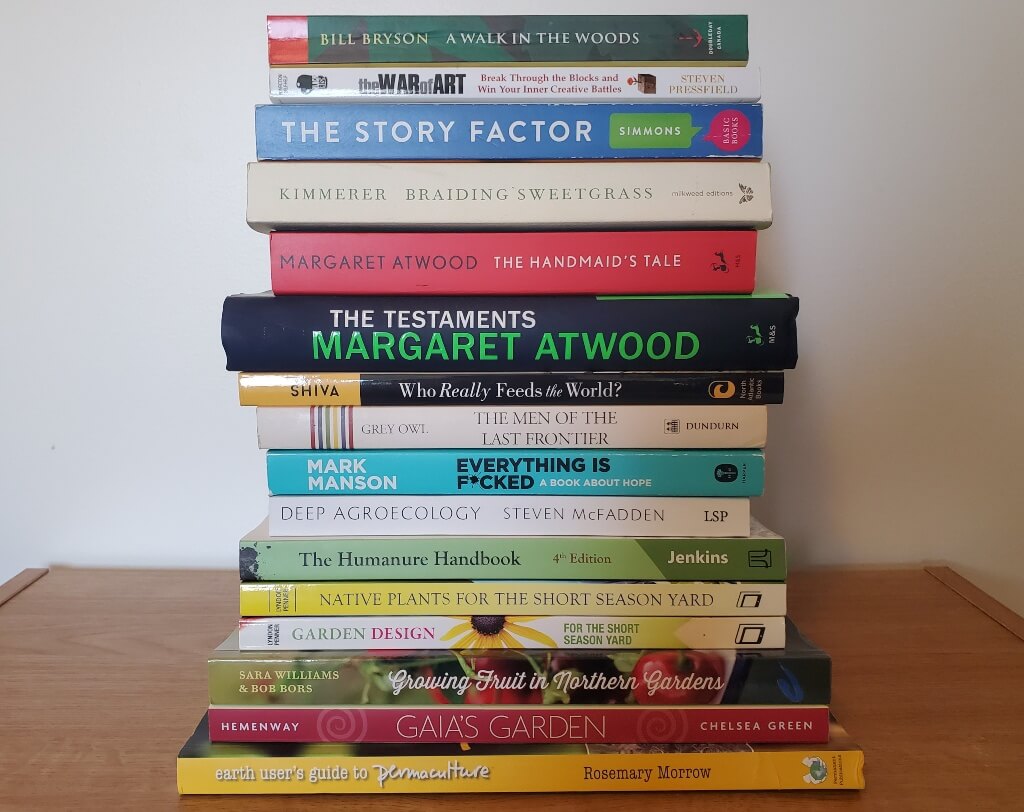
Permaculture, Agroecology, and Gardening
The Earth User’s Guide to Permaculture by Rosemary Morrow
This book was recommended to me as a good overview and introduction to permaculture. It does a great job of explaining what permaculture is, as well as the ethics, values, and principles which underpin it. There are also plenty of practical tips and methods for approaching the various aspects of land use and food growing. Although located in Australia, Morrow has implemented permaculture designs in many different climates and does a fairly good job of relaying information that applies in many cases. However, there isn’t a lot of cold climate specific information. I do still consider it to be a solid jumping-off point.
The Earth User’s Guide to Permaculture is a broad overview that touches on A LOT of topics and has a ton of great information. I will be referencing this book plenty of times as I work through and implement my design plans for our yard. I would highly recommend it to anyone looking to learn more and get their feet wet in the permaculture world.
Gaia’s Garden: A Guide to Home-Scale Permaculture by Toby Hemenway
Another oft-recommended permaculture manual, Gaia’s Garden is heavily focused on creating a garden in the form of a backyard ecosystem. This book talks less about the philosophy behind permaculture and more about the technical elements of implementing a design. Topics covered range from soil building to plant guilds to rainwater catchment and more. Gaia’s Garden is where I got the original inspiration to establish keyhole-inspired garden beds in my first garden. This is another one that warrants a read (and regular referencing) for anyone looking to implement a permaculture growing system.
The Humanure Handbook by Joseph Jenkins
If you’re looking for a surprisingly enthralling read on all things poo, then this is your book. I came across this title somewhere along the never-ending path to figuring out the best way to handle human waste when you’re off-grid, and I have to say I was leery. Composting human excrement isn’t exactly a mainstream practice, and I was fully expecting the book to be nothing more than the crazed rantings of someone who’s been alone in the wilderness too long. Just chuck in in a pile and let it rot! Salmonella is a conspiracy theory anyway… But I was pleasantly surprised to find The Humanure Handbook to be a witty and interesting read chock full of statistics, research findings, biology lessons, and even the history of human relationships to our own output. On top of all that, it has the technical and practical information you need to start your own humanure compost set up. It will completely change the way you look at a flush toilet. Honestly, even if you have absolutely no desire to compost your turds, read it anyway.
Deep Agroecology: Farms, Food, and Our Future by Steven McFadden
Deep Agroecology is basically the cliff notes version of the myriad of concepts, philosophies, sciences, approaches, and ways of thinking underpinning agroecology. In a nutshell, agroecology is an approach to food production that combines ecology and agronomy with the aim of creating sustainable production systems. It’s a holistic approach that incorporates things like soil health, human health, economics, equity, and social justice into food production. In this book, McFadden takes us into deep agroecology, which goes one step further by incorporating nontangible and unseen elements like mysticism and energy fields. This book requires the right mindset, as it takes food production (historically a very tangible, hands-in-the-dirt type practice) to a whole other plane of existence. Light some patchouli incense, open your mind, and enjoy the read.
Who Really Feeds the World? The Failures of Agribusiness and the Promises of Agroecology By Vandana Shiva
Vandana Shiva is a physicist and environmental activist famous for her work and research in economic, social, and food justice movements. In Who Really Feeds the World? Shiva lays out a global-level critique of the current trend in food production toward corporate-controlled industrialized farming and instead advocates for small-scale, localized production, which utilizes agroecological principles. This book gives a good big picture view of the global food system and potential alternatives.
Braiding Sweetgrass: Indigenous Wisdom, Scientific Knowledge, and the Teachings of Plants by Robin Wall Kimmerer
Braiding Sweetgrass has become quite the cult classic for those of us on a mission to reconnect with nature. Botanist and member of the Citizen Potawatomi Nation, Wall Kimmerer brings together science and storytelling to help reimagine the world and our place in it. A call to move away from the idea that humans should be separate and uninvolved in nature and instead advocates for establishing a reciprocal relationship with the living world. The beautiful writing and vast wisdom she shares creates a unique love letter to the world we live in. A great read and my most highly recommended book of the year.
Growing Fruit in Northern Gardens by Sara Williams and Bob Bors
An extensive guide to various fruit crops that will grow in cold climates. The book starts with a good overview of all the different aspects of growing fruit one must consider and then moves on to the species that can be grown here. The chapters are broken down into tree, shrub, cane, groundcover, nuts, and vine fruits (did you know we can grow kiwis in Saskatchewan?!), making it easy to navigate. Tons of information on propagating, growing, and harvesting is included. If you’re thinking about growing fruit, I’d highly recommend grabbing a copy.
Garden Design for the Short Season Yard: Everything You Need to Know for the Chinook and Canadian Prairie Zones by Lyndon Penner
I first came across Lyndon Penner earlier in 2020 as an instructor for some of the University of Saskatchewan’s online gardening workshops. I found his witty and passionate approach to gardening topics to be endearing and his classes to be full of useful information. When I heard he had authored multiple books, I knew I needed to get my hands on them.
Garden Design for the Short Season Yard is a manual meant to bring us prairie dwellers back to reality. Much of the gardening advice and information out there is targeted at entirely different growing conditions from what we face. This book has plenty of advice and plant recommendations specific to the prairies. It also walks through basic garden design principles like colour, texture, and focal points. It’s given me hope that my dream food forest need not be an ugly, tangled mess of foliage.
Native Plants for the Short Season Yard: Best Picks for the Chinook and Canadian Prairie Zones by Lyndon Penner
Incorporating native plants into gardens is becoming more and more common. Not only can native plants be beautiful additions, but they are also well adapted to local conditions and serve as food sources for local pollinators and wildlife. In Native Plants for the Short Season Yard, Penner walks through a long list of options for western Canadian gardens. He also includes information on sourcing and ethically propagating native plants, as well as things like design considerations and invasive species. This book is an excellent resource for prairie gardeners looking to incorporate local species into their yards and gardens.
Memoirs
A Walk in the Woods by Bill Bryson
This 1997 book has become a bit of a classic among the outdoor enthusiast world, and I thought it was high time I gave it a read. A Walk in the Woods follows the adventures of author Bill Bryson and his friend Katz – two unlikely hikers who set off to trek the Appalachian Trail. This is not the story of triple crowners or setting a fastest-known-time record. Instead, it’s a story of a couple of regular guys heading out on an adventure. The honest and funny accounts of their time on the trail will leave any outdoorist planning their next thru-hike.
The Men of the Last Frontier by Grey Owl
Englishman Archibald Belaney immigrated to Canada in 1906 and soon after constructed a Native identity under the name of Grey Owl. I knew very little of this history but did know of Grey Owl’s Cabin in Prince Albert National Park. That was enough to make me want to pick up this book. Part memoir, part storytelling, part cultural appropriation, The Men of the Last Frontier is an interesting look at life in Canada in the early 20th century. I’m not sure I’m convinced the stories included aren’t somewhat embellished, but if nothing else, it pushed the hike to Grey Owl’s Cabin a little further to the top of my list.
Novels
The Handmaid’s Tale by Margaret Atwood
Before The Handmaid’s Tale became a binge-worthy series, it was a 1985 novel by Margaret Atwood. The book follows handmaid Offred through her life in the totalitarian nation of Gilead. While Atwood’s dystopian future is entirely fictional, the author has noted that she included only things that have happened in history when writing the book. I watched the series before reading the book, so my mind is muddled with what happened and how in each form, but I would recommend checking both versions out.
The Testaments by Margaret Atwood
Atwood’s 2019 follow up to The Handmaid’s Tale, The Testaments is an after-the-fact recounting of events that occurred in Gilead through witness testimony and memoir. I won’t include any spoilers here but will just say that if you’ve enjoyed the first book in the series, it’s worth picking this one up as well.
Miscellaneous Nonfiction
Everything is F*cked: A Book About Hope by Mark Manson
In this follow up to The Subtle Art of Not Giving A F*ck, author Mark Manson continues his anti-self-help self-help mission. He does this by using psychological research and philosophical thought to tear down basically everything you thought was important in life and put into perspective why everything feels so damn horrible all the time. A fitting read for 2020 if there ever was one. I find Manson’s books a refreshing alternative to the just think positive and your life with be wonderful spiel so often found in the self-help world. If you’re looking for a blunt and humorous read that also makes you think, I’d suggest you pick up these books.
The War of Art: Break Through the Blocks and Win Your Inner Creative Battles by Steven Pressfield
The War of Art is a quick, straight to the point read for anyone struggling to make progress on a creative project. Pressfield shares stories and advice from his career as an author to help entrepreneurs, poets, writers, and artists overcome inner obstacles that are standing in their way. A great kick in the pants for anyone feeling stuck.
The Story Factor: Inspiration, Influence, and Persuasion Through the Art of Storytelling by Annette Simmons
A lesson on how storytelling and influence coincide, The Story Factor offers examples and techniques on how to use this ancient art to bring about positive change. Although there are many useful bits of knowledge shared that would apply anywhere, I found the book largely focused on the use of storytelling in the corporate/business world. It would be especially useful for anyone in that realm but still a valuable read for anyone looking to incorporate storytelling into their lives and work.
What were your favourite reads from 2020? Share in the comments below!
